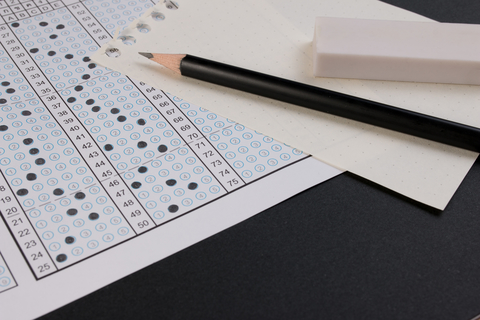SCAT is a well-sought acronym for School and College Ability Test. It is a uniform entrance test conducted by the John Hopkins Center for Talented Youth (CTY). Often referred to as “above grade level” test because the questions in this examination are of higher grade levels of math and verbal reasoning abilities than the current grade level of the student. Considering the complexity of the exam, SCAT is extremely valuable, but at the same time, difficult to crack.
If you think you have a child who is destined for college, this might be a valuable option to look at.
SCAT is divided into three broad groups:
1. Elementary SCAT
This type of examination is held for students only in the second and third grade, who take tests that are actually designed for students in grades four or five. It’s an amazing opportunity to test the ability of the young mind.
2. Intermediate SCAT
This particular test is taken by students in 4-5th grade, who take exams that are designed for 6-8th grade students. It gives you a clear idea about the understanding and capability of your child.
3. Advanced SCAT
This examination is taken by students who are in the sixth grade and above and answer the questions framed from the syllabus of grades 9-12.
Breaking down the SCAT
The SCAT tests the verbal and mathematical ability of a student. Hence, it is composed of two sections, Verbal and Quantitative.
In total there are 110 SCAT test questions, which are equally divided among the two sections. However, in total, only 100 are evaluated. Therefore, allotting 55 questions to each section, including 5 non-identifiable experimental items that do not count as a part of the student’s score.
Understanding the two sections
Quantitative: This section measures the child’s understanding of numerical operations. There are multiple-choice ‘mathematical comparisons’ questions, which require an evaluation by the students to determine which one is greater. The problems are focused on measuring rather than computation. The quantitative section requires mathematical reasoning for one to answer the given questions, which is a great way to test thinking ability.
Verbal: This particular section measures the child’s knowledge with respect to knowledge about words and verbal reasoning ability. It consists of multiple-choice analogy questions, which require the child to choose the right pair of words from the options which are given to come to the final answer. To score well in this section, the child needs to have a stronghold of vocabulary, verbal reasoning, and grammar.
How these tests are scored?
A child’s score is scaled based on the examination taken and then a comparison is made with the results of the test scores of normal students in the higher level grade. The child’s percentile rank is then given, which can differ when compared to a more recent group of students who took the tests. Here is how each grade can be compared to the past ones:
- Grade 2 to Grade 4
- Grade 3 to Grade 5
- Grade 4 to Grade 6
- Grade 5 to Grade 8
- Grade 6 to Grade 9
- Grade 7 to Grade 12
- Grade 8 to Grade 12
Timing and breaks
The SCAT exam understands the value of a break to give a quick mental boost. It gives you a short recess in order to allow your mind to declutter and start working fresh again. There is a 10-minute break between each of the two 22 minutes’ sections. However, the break is optional and is only given to a student if he/she requests it. Moreover, a student is responsible to come back for the test on time after the break. The maximum time allotted for the test is 90 minutes which is usually more than enough because the test itself takes less than an hour.
Additional information
Here’s something to rejoice: there is no negative marking for a wrong answer! So, it is considered smart to attempt all the questions without any pressure of getting the wrong answer. If you do not have time to answer a question or have no clue about a particular poll, it is recommended to just give your best shot at guessing, you never know when you get lucky!
For more great college tips, check out the other blogs on College Basics.







